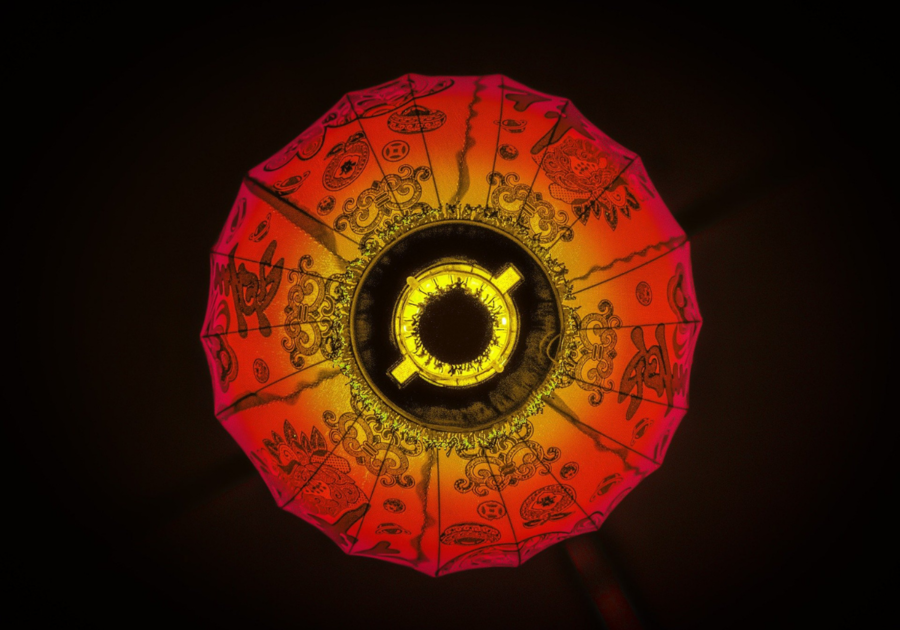Millions of people around the world will ring in the Lunar New Year on Friday, February 12th, coinciding with the first new moon of the lunar calendar. While commonly referred to as “Chinese New Year,” many East Asian and Southeast Asian countries outside Mainland China also celebrate the Lunar New Year, including Korea, Vietnam, Taiwan, Hong Kong, Tibet, Bhutan, Mongolia, and the Philippines.
Each country has its own unique traditions and customs, but common to all celebrations are coming together with family and friends, gift-giving, and preparing and eating traditional foods.
The Year of the Ox
On February 12th, we say goodbye to the Year of the Rat and usher in the Year of the Ox, the second animal of the Chinese Zodiac. The Ox is an esteemed animal in Chinese culture and is said to represent hard work, positivity, and honesty.
Here are six links to ox-themed crafts you can do with your kids:
Virtual Lunar New Year Celebrations
While many in-person Lunar New Year celebrations are canceled this year due to the pandemic, you can enjoy these three virtual events at home:
Host: Asia Society (New York)
Date/Time: Saturday, February 6th from 1 to 3 p.m. EST
Details: FREE; Watch live on YouTube or Facebook
Join Asia Society for a day of performances and arts and crafts inspired by Lunar New Year traditions across Asia. Events include a Chinese Zodiac puppet show, Korean New Year's song and dance, Kung Fu demonstration, and Dragon Dance.
Host: Oakland Asian Cultural Center
Date/Time: February 12-19
Details: FREE; Click HERE for more information and a schedule of events.
OACC is hosting a weeklong festival of virtual programming highlighting Lunar New Year traditions and celebrations from many Asian countries, including China, Vietnam, Korea, Japan, Mongolia, Tibet and more. Programming will include performances, demonstrations and classes on their YouTube Channel.
Host: The Smithsonian American Art Museum, the Chinese Cultural Institute, and the Embassy of the People's Republic of China in the United States of America
Date/Time: Saturday, February 13th at 10 a.m. EST
Details: FREE; Registration required via Eventbrite.
Enjoy streamed performances and demonstrations of traditional Chinese and Lunar New Year crafts and traditions.
Chinese New Year

Dragon dances, mooncakes, parades, fireworks, red envelopes... most of us are familiar with many of the traditions associated with Chinese New Year celebrations. Lunar New Year is a very big deal in China. Schools and businesses are closed for a whole week and millions of people travel to their hometowns to spend the holiday with family in what is often referred to as "the world's largest human migration." Red is considered a lucky color in Chinese culture, so you will see it in abundance during Lunar New Year festivities.
Speaking of red, those red envelopes, known as hong bao, contain money that is given by elders to children. While the traditional foods prepared and eaten during Lunar New Year vary somewhat by region, jiaozi (dumplings), nian goa (rice cakes), and mandarin oranges are considered lucky foods.
How to celebrate Chinese New Year at home:
| - Learn to say "Happy New Year" in Mandarin |
| - Try these kid-favorite recipes for jiaozi (dumplings),
lo mein or spring rolls |
| - Make this adorable Chinese Dragon Puppet craft |
| - Watch a Chinese Dragon Dance performance and learn about its meaning |
| - Watch this kid-friendly video explaining the origins of Lunar New Year in China |
Korean Seollal
Korean Lunar New Year, called Seollal, is one of the most important national holidays in Korea, where families gather over three days — spanning from the day before Seollal to the day after — to pay respect to their ancestors, prepare and eat traditional foods, play folk games, and exchange gifts. Eating rice cake soup (tteokguk) is an important part of the tradition, as Koreans believe everyone gets a year older on Seollal — but only if they eat their tteokguk! Kids look forward to performing a deep traditional bow (sebae) for their elder family members in exchange for blessings — and New Year's money!
How to celebrate Seollal at home:
| - Learn how to say "Happy New Year" in Korean |
| - Learn the proper way to bow on Seollal (sebae) |
| - Try this tteokguk (떡국) rice cake soup recipe from Maangchi |
| - Craft these fun Korean fans and drums and this origami Hanbok (traditional Korean dress) |
| - Learn how to make your own Yut Nori game, a traditional board game Koreans often play on Seollal |

Vietnamese Tết
Vietnamese New Year ("Tết") is the most important national holiday in Vietnam. Similar to Korean Seollal, Vietnamese people celebrate by returning to their home villages for big family reunions involving special holiday foods, decorations, games, ancestral worship, exchanging traditional New Year's greetings, bestowing lucky money on kids and elders, and purification rituals aimed at washing away the bad luck of the old year and welcoming the new year afresh.
Lunar New Year's Eve kicks off the celebrations with fireworks, dragon dances, and boisterous parades filled with rattles, gongs, drums and bells meant to scare off evil spirits. The first day of Tết is the most sacred, celebrated with just close family. Family members dress up in new clothes, symbolizing a fresh start to the new year, and children receive a red envelope containing money from their elders. The following days are filled with visits with friends and extended family.
How to celebrate Tết at home:
| - Learn how to wish someone a "Happy New Year" in Vietnamese |
| - Try this Mứt hoa quả (candied fruit) recipe, a favorite of Vietnamese children during Tết |
| - Learn the top ten taboos during Tết that are said to bring bad luck! |
| - DIY your own Vietnamese nón lá ("leaf hat") |
Tibetan Losar
Tibet's Losar festival is steeped in their common Buddhist faith with an emphasis on continuous chanting of scripture to expel the evil demons that the Tibetan people believe exist everywhere, and praying for good luck and blessing for the coming year.
Families prepare for Losar by buying new clothes, thoroughly cleaning their homes to clear away the bad luck of the old year, and decorating with fragrant flowers and auspicious signs. The centerpiece of the home is the Losar altar, which is a basic Tibetan Buddhist shrine, but with additional items meant to invoke blessings and abundance for the New Year.
Fun fact: Because the Tibetan words for "sheep's head" and "beginning of the year" are similar, it is customary for families to make a sheep's head out of colored butter as a decoration! Losar festivities last several days and include gathering with family and friends, prayer ceremonies, exchanging gifts, eating traditional foods, and visiting local monasteries.
How to celebrate Losar at home:
| - Learn some traditional Tibetan New Year's greetings |
| - Make khapse (deep fried pastries most often eaten during Losar) and momos (Tibetan dumplings) |
| - Take a virtual tour of Jokhang Temple, the holiest place in Tibetan Buddhism |
| - DIY your own Tibetan prayer flags |
Mongolian Tsagaan Sar
Tsagaan Sar literally translates to "White Moon," and is Mongolia's most important national holiday. While Tsagaan Sar celebrations and customs have changed several times since the holiday was first established in the 12th century, modern festivities focus on family togetherness and unity, paying respect to elders, passing on Mongolian culture and traditions to the younger generation, and welcoming spring with an optimistic spirit and kind heart. Similar to other cultures, Mongol New Year's preparations focus on cleaning their homes and bodies, with the belief that cleanliness ushers in good luck, and preparing traditional foods. Tsagaan Sar festivities officially last three days and involve visiting with family, friends, and neighbors; many special rituals; and lots of eating with an emphasis on white food, which symbolizes purification.
How to celebrate Tsagaan Sar at home:
| - Learn Zolgokh, the traditional Mongolian greeting performed during Tsagaan Sar |
| - Make Mongolian buuz (steamed dumplings) and suutei sai (milk tea) |
| - More than half of Mongols live in gers (yurts); watch this video to see how a ger is built |
| - Make a Mongolian girl's headdress craft |
Happy New Year! We hope you enjoyed this tour of Lunar New Year traditions and have fun incorporating some in your own celebrations this year.
This story originally appeared on CertifiKID, founded by a mom with a passion for helping parents provide the best experiences for their children on a budget.



